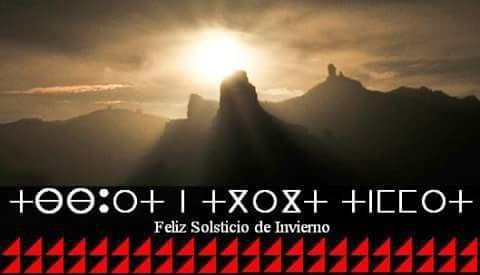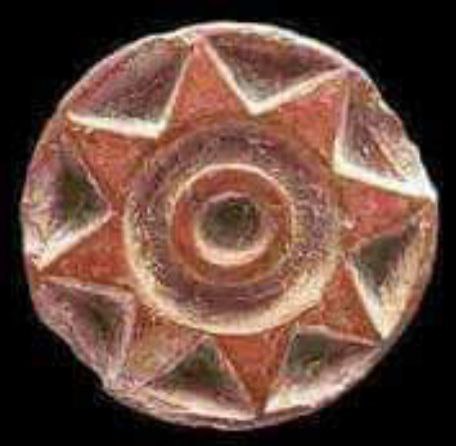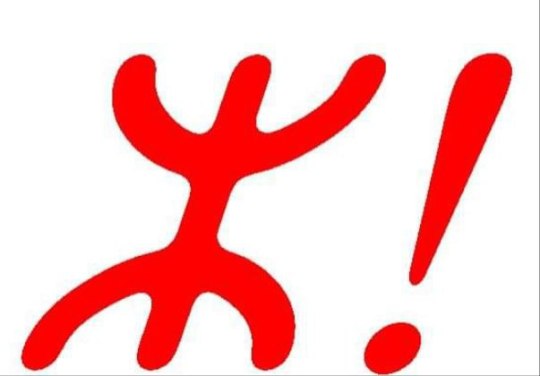#ix scori
Text
i’ve been meaning to give one of my characters, Scori, an “actual” design like I have with Beetle Raider and Violen, but I can’t find a way to actually get the design how i want it to look. i suck at drawing people (and am too busy/impatient/adhd to learn/get better) so that’s out, heromachine (the program I used for Beet and Violen) is too realistic, kisekae has the right sort of style but i can’t figure out how to give a character in it the body shape/proportions i’m imagining, and dbz character creators (Scori is heavily inspired by Dragon Ball characters and I guess shonen anime as a whole) lack the depth and options necessary to make anything beyond Vegeta in the clothes of the other Z Warriors. like… he’s not even based on vegeta! that doesn’t help me at all!
i just need a character creator with the depth of kisekae, the customization options of heromachine, and the style of a DBZ dress-up game all in one, so that the one reference image i have for this character doesn’t look like a bald shirtless weightlifter in a teal wig and a skirt.
#infernocross#original character#volcross#my characters#heromachine#kisekae#fictional characters#ix scori#i don’t really talk about scori a lot but he’s one of the tier 2 main characters#like he’s less of a main character than glaive and caliber but more than garath or radix#oh yeah i don’t think i’ve ever talked about radix#like at all#tldr radix is a robot that helps with archaeological record keeping and such#that’s one problem with having thought about this series way more than i’ve posted about it#because i’ve come up with all these characters and plots and whatnot and no one else knows about them#so i’ll just mention something offhandedly like ‘violens brother is a bitch ass motherfucker’#and anyone who’s trying to keep up with the lore is like ‘wait violen has a brother’#oh btw violen has a brother who is indeed a bitch-ass motherfucker#y’know maybe i should make like a bullet point list of all the facts and whatnot for all the infernocross characters so far#just to have it all out there and whatnot
0 notes
Text
The Astronomical Chronicles 2.0 Cast: The Alien Archaics
(Click on the underlined links to see their original versions and compare the changes made)
The Alien Archaics
A group of prehistoric humans, anthros, witches, mythicals, and Stellinias who represented the Tzolk’in Mayan zodiac and the Aztec zodiac. To this day, the behaviors and legends of the Alien Archaics have been carefully documented long after they faded away from existence.
Caimadile
A smart and assertive cipactli who represented Imix/Cipactli. Caimadile had the ability to create and wield weapons with primordial power. He was once thought to be responsible for causing great floods.
Windsnatcher
An attentive and communicative harpy who represented Ik/Eecatl. Windsnatcher had the power to use air-based magic. She was the real culprit behind the great floods that led to the Caimadile being wrongly blamed for it.
Vesperlupus
A faithful and calm wolf-like mythical who represented Akbal/Calli. Vesperlupus had the ability to create and wield weapons with power over death force. Many people feared him as they believed he was the king of the underworld.
Dea
An entertaining and dynamic anthropomorphic Ardeosaurus who represented Kan/Cuetzpalin. Dea was able to harness the power of the Seeds of Growth in order to gain the ability of harvest manipulation. She is said to have acted as a grandmother figure to her loved ones.
Chiic
An empathic and outspoken human who represented Chicchan/Coatl. Chiic was able to manipulate snakes using enchanted snakeskin. He was the leader of a cult that honored him by bringing feathers.
Mortis
A sensible and polite witch who represented Cimi/Miquiztli. Mortis had the power to use necromancy. He was thought to have worked alongside the Vesperwolf, so he was feared by everyone just as much.
Scori
An eccentric and wandering human who represented Manik/Mazatl. Scori was able to manipulate fire using enchanted tinder fungus. She once belonged to a tribe that was disturbingly obsessed with sacrifices in order to keep their access to fire.
Alaru
A playful and bright anthropomorphic Nuralagus who represented Lamat/Tochtli. Alaru was able to harness the power of the Star of Maturity in order to gain the ability to fuse cosmic energy and physical combat. During her lifetime, she has acted as a midwife.
Neros
A careful and insightful griffin-like Stelliania who represented Muluc/Atl. Neros had the power to control fire and water by projecting an aura. She was never meant to be made, but she made up for it by using her powers to find some of Earth's hidden resources.
Kyo
A trusty and naive anthropomorphic Amphicyon who represented Oc/Itzcuintli. Kyo was able to harness the power of the Bone of Devotion in order to gain the ability of eclipse manipulation. He was somehow able to tame and work with a wild scorpion-like Bondbeast.
Archi
A funny and talkative anthropomorphic Archicebus who represented Chuen/Ozomahtli. Archi was able to harness the power of the Fruit of Creativity in order to gain the ability to combine physical combat with the creative arts. Ever since he found the fruit, Archi became very much admired.
Mead
A cooperative and meticulous witch who represented Eb/Malinalli. Mead had the ability to create and wield weapons with chlorokinetic power. She would often go on adventures with her best friend, Oncamyst, and challenge people to ball games.
Glade
An overbearing and persistent witch who represented Ben/Acatl. Glade had the power to use wetland magic. She was the proud mother of Mead and often played ball games with her daughter and her friend Oncamyst.
Oncamyst
An impulsive and sophisticated cat-like mythical who represented Ix/Ocelotl. Oncamyst had the power to use shamanic magic. As much as he loved to go on adventures with his friend, Mead, Oncamyst couldn't help but worry for her safety.
Lumil
A free-thinking and nitpicky human who represented Men/Quauhtli. Lumil was able to use a magic barrette in order to gain the abilities of eagles. Not many knew about this, but Lumil would often dream of putting an end to humanity with her imaginary pet birds.
Bravr
A concerned and competent human who represented Cib/Cozcacuauhtli. Bravr was able to use a magic scarf in order to gain the abilities of vultures. He found the scarf while chasing after an owl that stole his spear.
Clay
A philosophical and affable witch who represented Caban/Ollin. Clay had the ability to create and wield weapons with anarchic power. He would often wreak havoc by destroying the land around him.
Suikou (swee-koh)
A logical and selfless Stellinia who represented Etznab/Tecpatl. Suikou had the power to utilize practices that were geokinetic in nature. He had a close relationship with a Stellinia named Lluviano, who, like him, also got stranded on Earth.
Lluviano (yoo-vyah-noh)
A soothing and mystical Stellinia who represented Cauac/Quiauitl. Lluviano had the power to utilize practices that were electrokinetic in nature. He would sometimes work with Grypfion to help her find resources.
Flùrnan
A loving and idealistic Stellinia who represented Ahau/Xochitl. Flùrnan had the power to control flowers by projecting an aura. Although she worked for the Caelestas, Flùrnan stayed on Earth so she could befriend humans and help them find food.
2 notes
·
View notes
Text
UNESCO Y LA LENGUA MATERNA CANARIA AMAZIGH
Seguimos vivos a pesar de los creyentes y adoradores de un muñeco de palo clavado en la cruz, pido desde éste bloc que la UNESCO actúe contra los criminales asesinos y terrorista que manipulan a nuestro pueblo aborigen canario Amazigh.
EDRA - Origen
LA RUPTURA GENERACIONAL DE NUESTRA ANTIGUA LENGUA MATERNA
La lengua materna es el primer idioma que por defecto aprendemos. Es la lengua que nos enseñan nuestros padres, la que desde pequeños escuchamos en nuestro entorno familiar. Ésta define nuestra identidad y procedencia geográfica y es también motivo de orgullo. Pero, nuestra lengua materna era indígena del archipiélago canario y la probabilidad de ser discriminado era bastante alta.
«Los españoles siempre controvertían el nombre de las cosas de los canarios y despreciaron sus vocablos y cuando se reparó para rastrearles sus costumbres por más extenso no hubo quien diera razón de ello»
[Morales Padrón, Francisco (ed.). 1993 (1978: 435). Canarias: crónicas de su conquista. Transcripción, estudio y notas]
La lengua familiar isleña, como vehículo de comunicación social, se extinguió hacia Ia mitad del siglo XVI, aunque algunos ancianos la sabian aún en el siglo XVII.
«La lengua de los guanches viejos, que aun hasta hoy tienen su población en Candelaria y en Güimar, es muy parecida a la de los moros de Berbería»
[Sir Edmond Scory, 1626]
Son estos ancianos los que sirvieron de informadores a los antiguos cronistas. Una presión colonial determinante indujo esa extinción, aunque una cantidad importante de palabras nativas penetró en el naciente español isleño. La tradición oral de nuestro pueblo supo custodiar hasta hoy en día decenas de voces, que hace solo cien años -cómo podemos comprobar en Bethencourt Alfonso, por ejemplo-, eran muchas más.
«Esto es lo que de las costumbres de los naturales he podido, con mucha dificultad y trabajo, acaudalar y entender; porque son tan cortos y encogidos los guanches viejos que, si las saben, no las quieren decir, pensando que divulgarlas es menoscabo de su nación»
[Fray Alonso de Espinosa (1594). Del origen y milagros de la Santa Imagen de nuestra Señora de Candelaria (…), Libro I, Capítulo IX]
Estos informadores, últimos depositarios de las antiguas hablas isleñas debieron también de hablar normalmente el castellano, ya que el fenómeno de extinción de una lengua supone normalmente el estadio intermedio del bilingüismo. Sin embargo, no parece haber sido nuestro caso, precisamente por la brusca ruptura lingüística entre las generaciones, que debió ser la consecuencia inevitable de medidas sociales drásticas tomadas por los conquistadores, entre las que cabe destacar también la abundante venta de menores de edad en los mercados esclavistas europeos.
En efecto, sobre la iniciativa de los obispos, y para asegurar su más rápida cristianización, los niños y niñas fueron separados en gran número de sus parientes y confiados a familias españolas en una especie de tutela, que se puede creer estaba próxima a la servidumbre doméstica.
«El obispo D. Juan de Frías y el gobernador Pedro de Vera 𝐫𝐞𝐩𝐚𝐫𝐭𝐢𝐞𝐫𝐨𝐧 𝐥𝐨𝐬 𝐧𝐢𝐧𝐨𝐬 𝐲 𝐧𝐢𝐧𝐚𝐬 𝐜𝐚𝐧𝐚𝐫𝐢𝐨𝐬 𝐞𝐧𝐭𝐫𝐞 𝐥𝐨𝐬 𝐯𝐞𝐜𝐢𝐧𝐨𝐬 𝐩𝐚𝐫𝐚 𝐪𝐮𝐞 𝐥𝐨𝐬 𝐢𝐧𝐝𝐮𝐬𝐭𝐫𝐢𝐚𝐬𝐞𝐧 𝐞𝐧 𝐥𝐚 𝐟𝐞 𝐲 𝐥𝐞𝐬 𝐞𝐧𝐬𝐞𝐧𝐚𝐬𝐞𝐧 𝐥𝐚 𝐝𝐨𝐜𝐭𝐫𝐢𝐧𝐚 𝐜𝐫𝐢𝐬𝐭𝐢𝐚𝐧𝐚, dando a los casados que tenían sus mujeres las canarias, y a los hombres solteros les daban los muchachos canarios 𝐩𝐚𝐫𝐚 𝐪𝐮𝐞 𝐥𝐞𝐬 𝐬𝐢𝐫𝐯𝐢𝐞𝐬𝐞𝐧 𝐲 𝐟𝐮𝐞𝐬𝐞𝐧 𝐝𝐨𝐜𝐭𝐫𝐢𝐧𝐚𝐝𝐨𝐬»
[Juan de Abreu Galindo ca. 1590. Historia de la Conquista de las Siete Yslas de Gran Canaria. Pág. 173]
Mas estos niños y niñas no llegaron a ser bilingües, y los indígenas que conservaron la lengua fueron quienes, escapando de este sistema de educación, quedaron al margen de ello.
REFERENCIAS
Georges Marcy. 1962 (ca. 1943). «Nota sobre algunos topónimos y nombres antiguos de tribus bereberes en las Islas Canarias». Anuario de Estudios Atlánticos 8: 239-289. Traducción y comentarios: J. Álvarez Delgado.
Magos, Maúros, Mahoreros o Amasikes. Hupalupa. Primera edición: 4 de mayo de 1987.
ℹ️ Diccionario ínsuloamaziq, dedicado a las antiguas hablas amazighes de las Islas Canarias.
www.imeslan.com
📷 Foto superior: Fotograma del cortometraje “Mah” de Armando Ravelo. Foto inferior: El obispo Pildain en Las Nieves con niños de Agaete, años 40.





https://www.facebook.com/porladescolonizacion/posts/pfbid0kAAYVCXQQe8zicLJ6Q9sUdNW1ytnMQSKmz7t7FQQqhFLNZsK1uQ5XixZXu8esvUUl?__cft__[0]=AZWvbwgGOplsthI4Dks2xMbTG6WRYtOiiuDK-qc-Wg7nSvBAmVuB7PN2RTxH4ndya_oivwbyW5ziFdZxu0_yEwHtIT5ParCiRt2z1q7jH-kcfms6mWMBsEHxJMBwYGGOwHPFJL4eNFOs6ciwNkQDvymTjva2KgcJ1PCKHgTqfsCB06CNH-DBnqWIg64HCSVbw7BlG7t1OpuEaSA9UCgBu8Dk&__tn__=%2CO%2CP-R
#unesco#habla amazigh#aboriginal#aborigenous#indigemous#artenara#culture#history#genocide#united nations#native#canary islands#international criminal court#court penal international#corte penal internacional#aborigenes#indigenas#cultura#historia#genocidio#naciones unidas#nativos#islas canarias#canarias tiene identidad cultural propia#canarias la colonia mas antigua del mundo#descolonizacion de canarias#onu#canarias#icc#cpi
8 notes
·
View notes